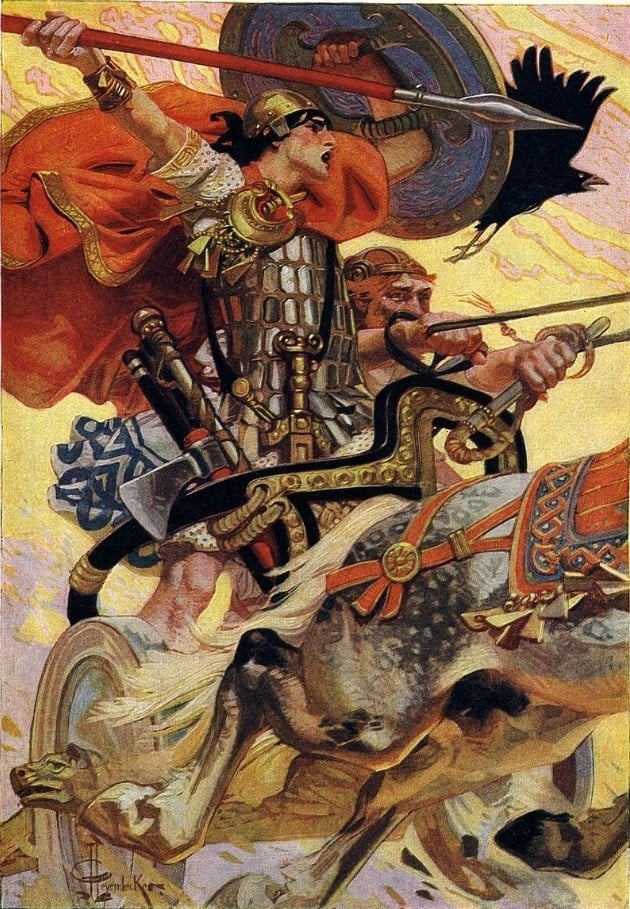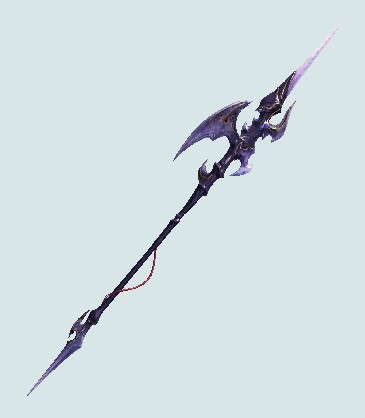Gáe Bulg: The Spear of Cú Chulainn
Imagine a world where legends and myths intertwine, where heroes wield weapons of unimaginable power. In this realm of Irish folklore, one such weapon reigns supreme—the Gáe Bulg. This isn’t just any spear; it’s a mystical artifact, a force of nature in the hands of a hero named Cú Chulainn. As we embark on this journey, we’ll unravel the mystique of the Gáe Bulg, learn of its incredible abilities, and discover the incredible warrior who made it legendary.
What was the Gáe Bulg?
The Gáe Bulg, known by various names such as Gáe Bulga, Gáe Bolg, or Gáe Bolga, was no ordinary spear from Irish mythology—it was a weapon of dread and death. Its very appellation, “spear of mortal pain” or “belly spear,” evoked images of agony and suffering.
Forged from the bones of a colossal sea monster, the Curruid, which met its end in combat against another sea behemoth known as the Coinchenn, the Gáe Bulg was steeped in both legend and terror.
This extraordinary weapon found its way into the hands of the legendary hero Cúchulainn, bestowed upon him by his martial arts mentor, the formidable warrior woman Scáthach. Its arcane technique was a closely guarded secret, shared with one and one alone—Cúchulainn himself.
Yet, what set the Gáe Bulg apart from any mundane weapon were the harrowing rituals required for its use. Before it could be unleashed, it had to be prepared by a flowing stream and hurled from the very fork of the wielder’s toes.
Striking its target with a single wound akin to a javelin, the spear then unfurled into thirty cruel barbs that anchored it deep within the victim’s flesh. Extracting it became a nightmarish task, involving the gruesome cutting away of flesh and sinew—an ordeal that whispered tales of its malevolent nature.
In some renditions of the myth, the spear boasted seven heads, each adorned with seven barbs, amplifying its gruesome reputation. It reached the zenith of its infamy when Cúchulainn faced his foster brother Ferdiad in a dire clash.
Cornered and overpowered, Cúchulainn’s final gambit involved his charioteer, Láeg, floating the Gáe Bulg downstream. With a thunderous thrust, it pierced Ferdiad’s armor and body, coursing through his very being like a venomous serpent, filling every joint with barbs. Ferdiad’s fate was sealed in agony.
On another tragic occasion, Cúchulainn wielded the Gáe Bulg against his own son, Connla, as a desperate last resort. Once thrown, this dreadful spear proved invariably fatal, and its gruesome aftermath demanded a grim task—cutting open the victim to retrieve it.
Who Wielded the Gáe Bulg?
Cú Chulainn, the legendary hero of Irish mythology, burst into the world through tales as enigmatic and varied as the shifting shadows of his life. In one telling, his mother, Deichtine, daughter and charioteer of the King of Ulster, aided in his birth amid a bizarre occurrence where a mare bore twin colts as they sought refuge from a snowstorm. By dawn, the house and its occupants vanished, leaving behind only the child and the colts.
Another rendition casts Deichtine as Conchobar’s sister, and she mysteriously disappears from Emain Macha, the heart of Ulster. Here, the King of Ulster seeks refuge with his nobles, unaware that Deichtine herself gives birth to her son, Sétanta. From these perplexing beginnings, Cú Chulainn’s life takes on a tapestry of remarkable encounters and deeds.

In his upbringing, Cú Chulainn is a multi-fostered child, raised under the watchful eyes of several mentors. Conchobar, Sencha mac Ailella, Blaí Briugu, Fergus mac Róich, Amergin, and Findchóem all share in shaping his destiny. He thrives in the house of Amergin and Findchóem, growing up alongside their son, Conall Cernach.
Yet, his adventures truly begin when, as a young boy, he yearns to join the boy troop at Emain Macha. Unaware of custom, he rushes into their midst without asking for their protection, sparking a chaotic skirmish. Soon, his prodigious martial prowess becomes evident as he dispatches his challengers single-handedly.
As he matures, Cú Chulainn encounters a smith named Culann and a fateful invitation to a feast. In a tragic twist, a mighty hound attacks him, prompting a solemn vow to guard Culann’s house and rear a replacement hound until it’s fit for the task. This incident bestows upon him the moniker “Cú Chulainn,” meaning “Culann’s Hound.”
His extraordinary journey leads him to a remarkable sojourn with Scáthach, a warrior-woman of Alba (Scotland). Here, he masters the arts of war, including the sinister Gáe Bulg, a barbed spear capable of unspeakable horrors. His bond with Ferdiad, his foster brother, thrives during this time, even fueling speculation about their relationship.
Returning to Ireland, Cú Chulainn’s desire for marriage focuses on Emer, daughter of Forgall Monach. However, her father opposes the union, leading Cú Chulainn on an arduous path to prove his worth, including training with Scáthach and confronting her rival, Aífe.
His martial prowess becomes evident on the battlefield, defending Ulster from the forces of Connacht in the epic Táin Bó Cúailnge. His ríastrad, a transformative battle frenzy, transforms him into a monstrous force to be reckoned with.
Despite his prodigious feats and devotion to duty, Cú Chulainn’s life is marred by personal tragedies. The fateful encounter with his son, Connla, ends in tragedy. Connla’s dying words reveal the untapped potential for father-son glory that will forever remain unfulfilled.
Gae Bulg in Pop Culture
Yu-Gi-Oh: Dragunity Knight – Gae Bulg

Final Fantasy XIV

Assassin’s Creed

Monster Hunter World

Conclusion
Our journey through Irish mythology brings us face to face with the Gáe Bulg—a symbol not just of strength but of the courage to make sacrifices. Forged in the fires of ancient stories, it found its match in the fearless Cú Chulainn, who wielded it with unmatched skill.
The Gáe Bulg, with its ability to strike terror into the hearts of foes and its destructive potential, stands as a timeless emblem of heroic determination. In a world of myths and legends, where stories become immortal, the Gáe Bulg reminds us of the enduring power of tales and the indomitable spirit of those who dare to become legends themselves.
